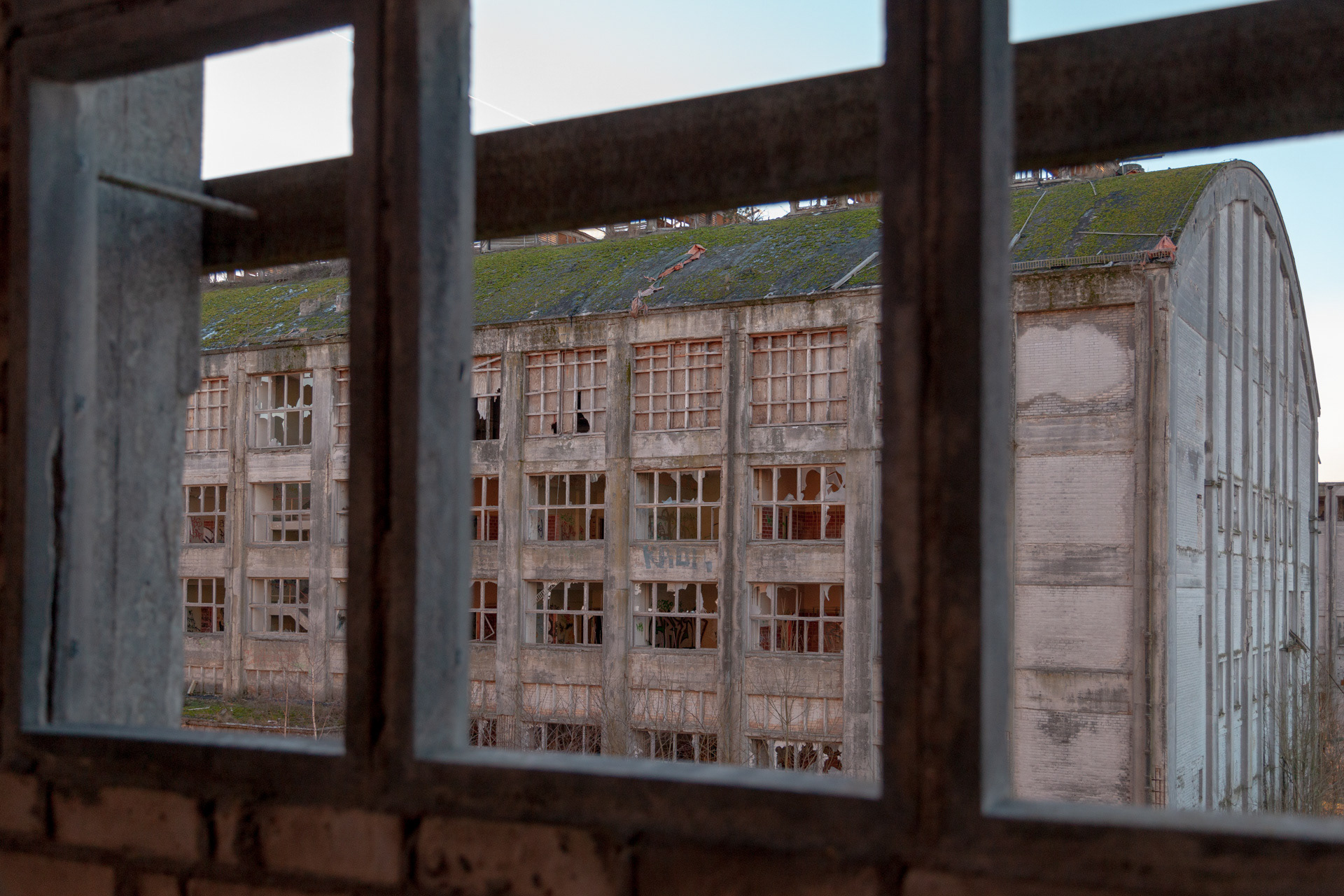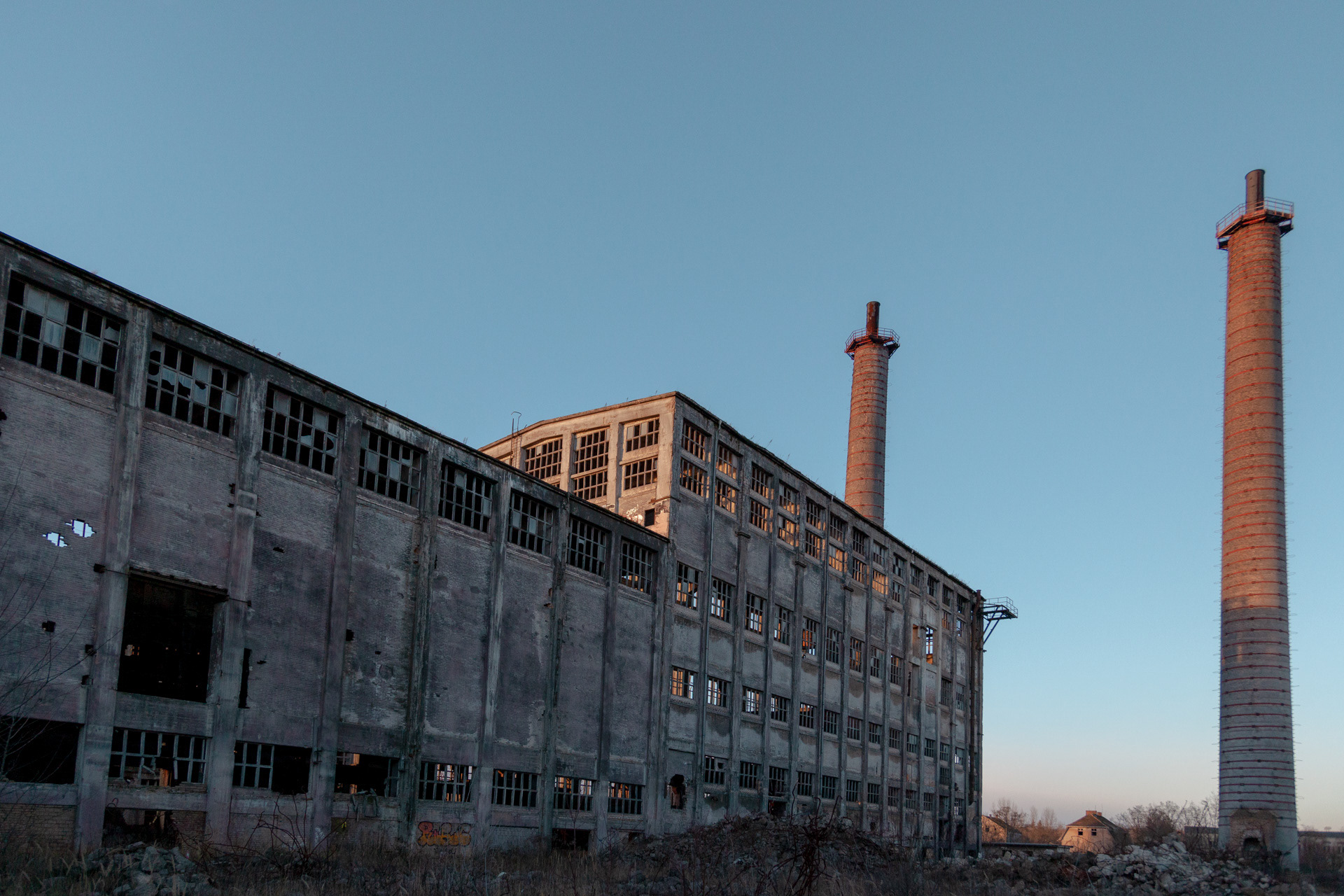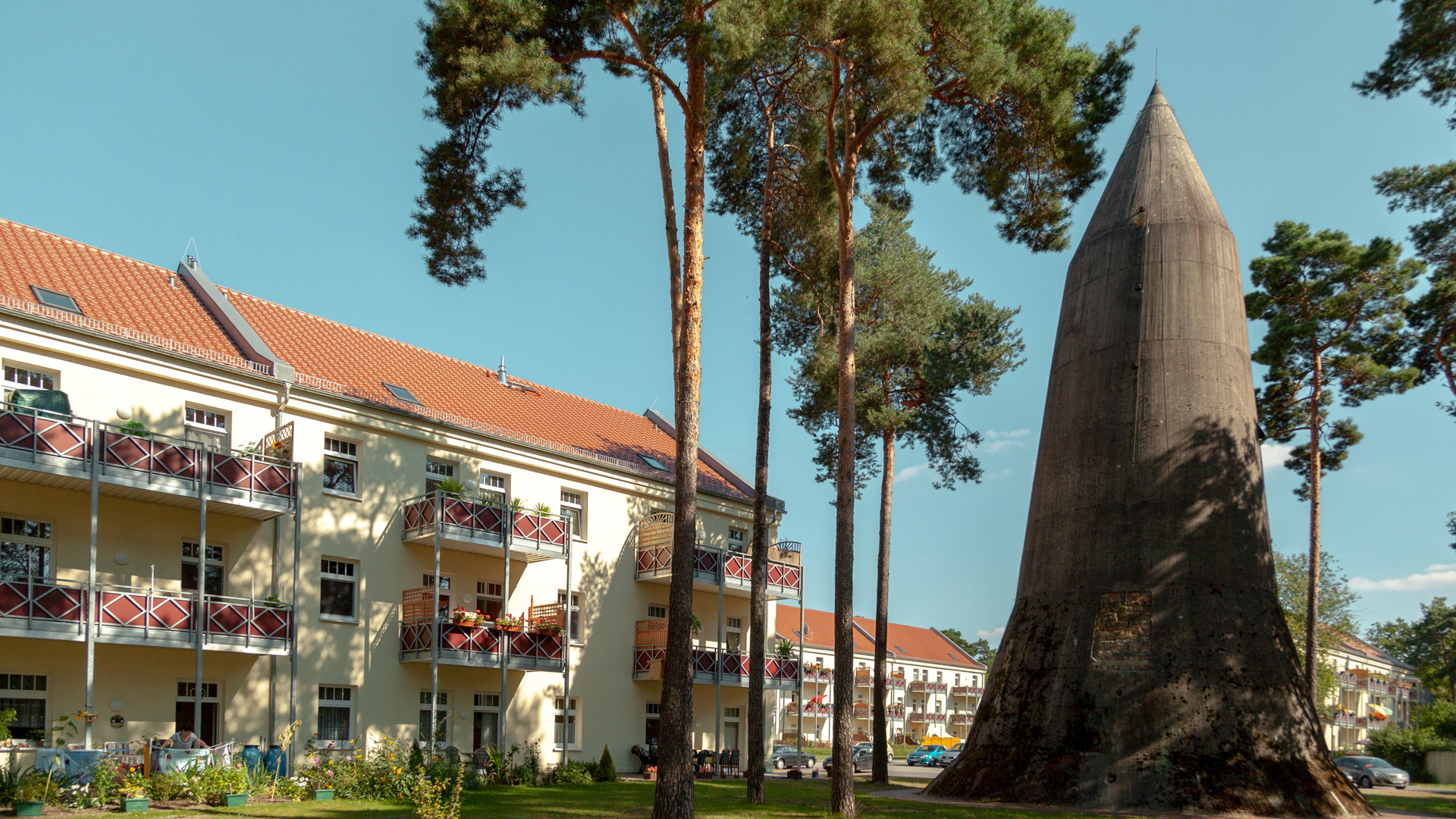The history goes back to the year 1900 when here there was a cement plant, just near a limestone deposit where operated the industrial processing of lime and cement since the 18th century. Due to the WWII the start to produce synthetic bauxite. After the war, the Soviet occupation dismantled the plant completely, leaving only the rotary kiln plant and empty halls.
1950 the rotary kilns were used for the production of feed phosphate. The fertilizer-end product, which is marketed under the name "Rükana" (hydrothermal defluorination of a mixture of rock phosphate, Phospohorsäure and soda). Years later - in the Seven-Year Plan (seven-year plan of peace, prosperity and happiness of the people) - formed to the site with new buildings and extensions to a powerful chemical plant, so that the first furnace line of the new chemical plant on 15 Anniversary of liberation from fascism was detonated in 1960.
After DDR time the place is abandoned and used as a film set.
1950 the rotary kilns were used for the production of feed phosphate. The fertilizer-end product, which is marketed under the name "Rükana" (hydrothermal defluorination of a mixture of rock phosphate, Phospohorsäure and soda). Years later - in the Seven-Year Plan (seven-year plan of peace, prosperity and happiness of the people) - formed to the site with new buildings and extensions to a powerful chemical plant, so that the first furnace line of the new chemical plant on 15 Anniversary of liberation from fascism was detonated in 1960.
After DDR time the place is abandoned and used as a film set.


































